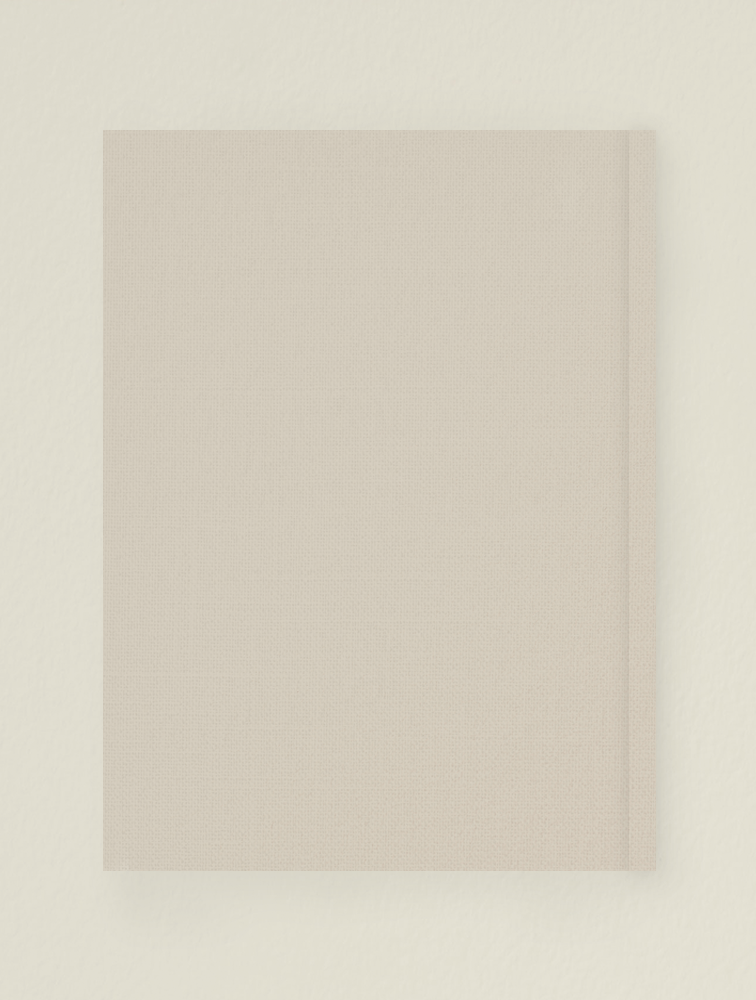
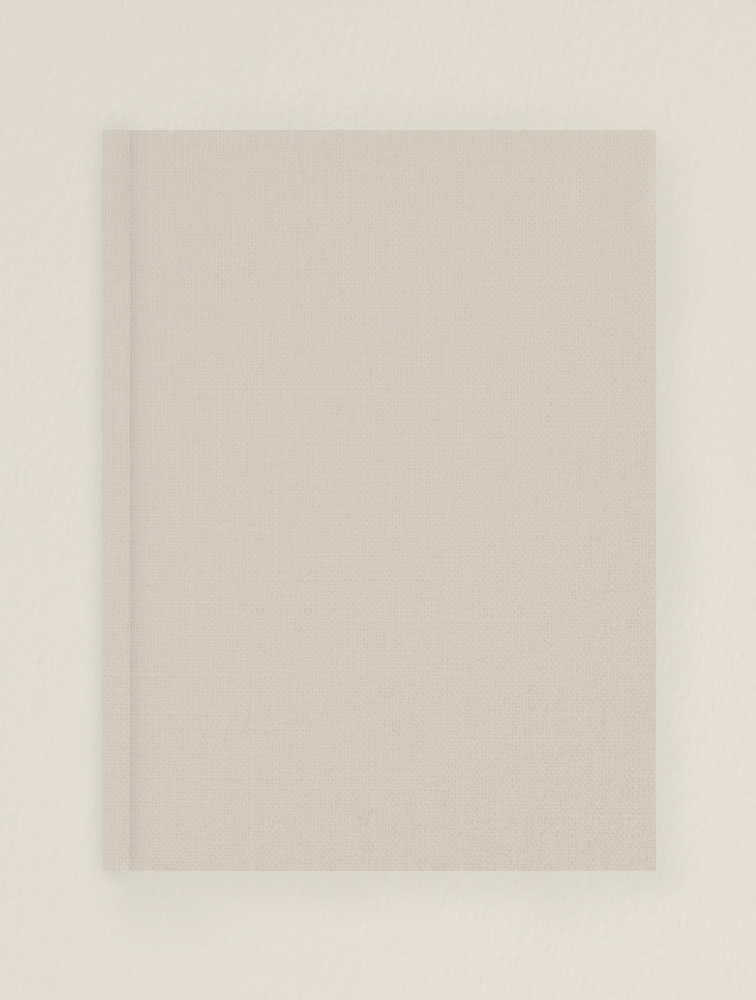
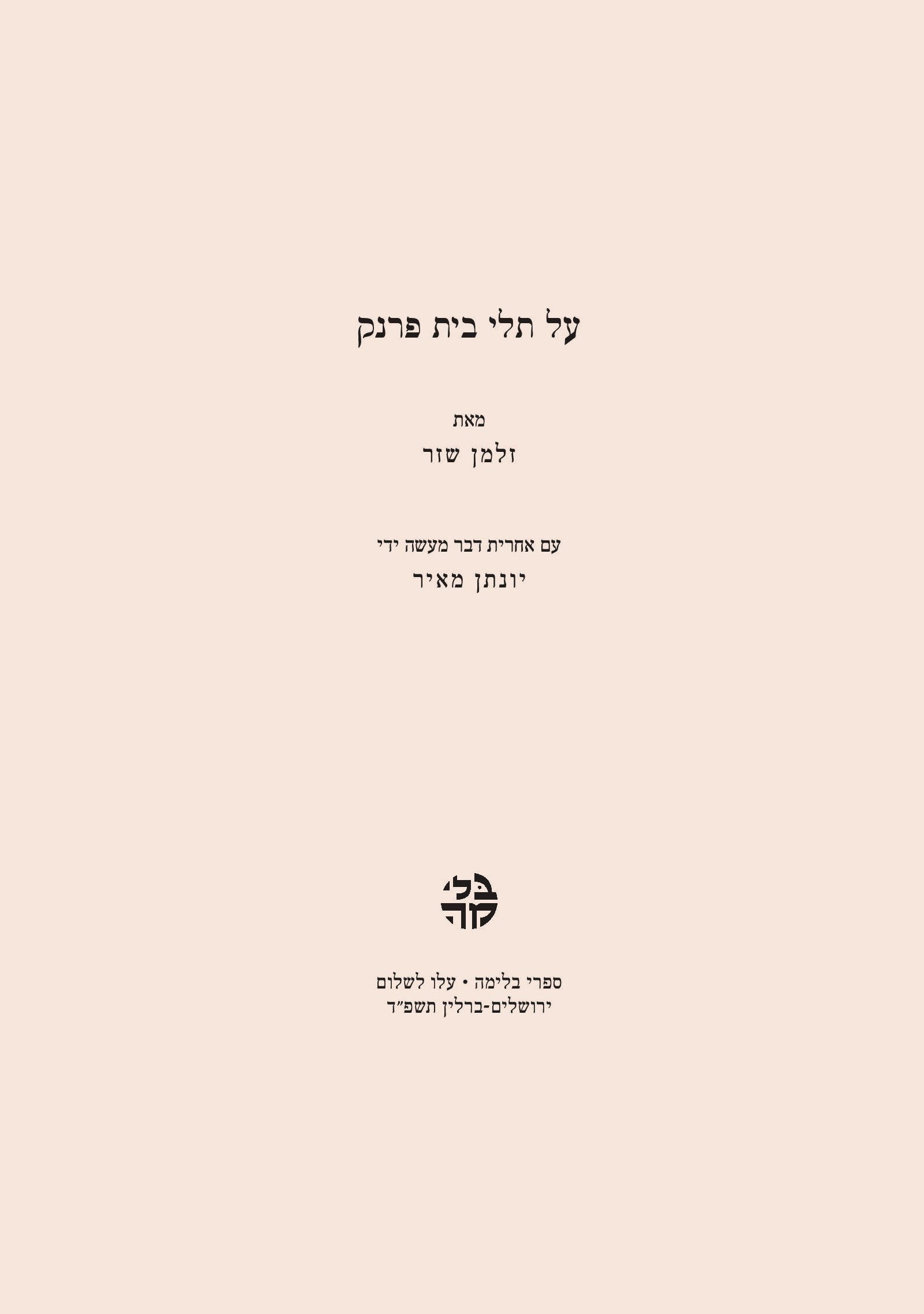
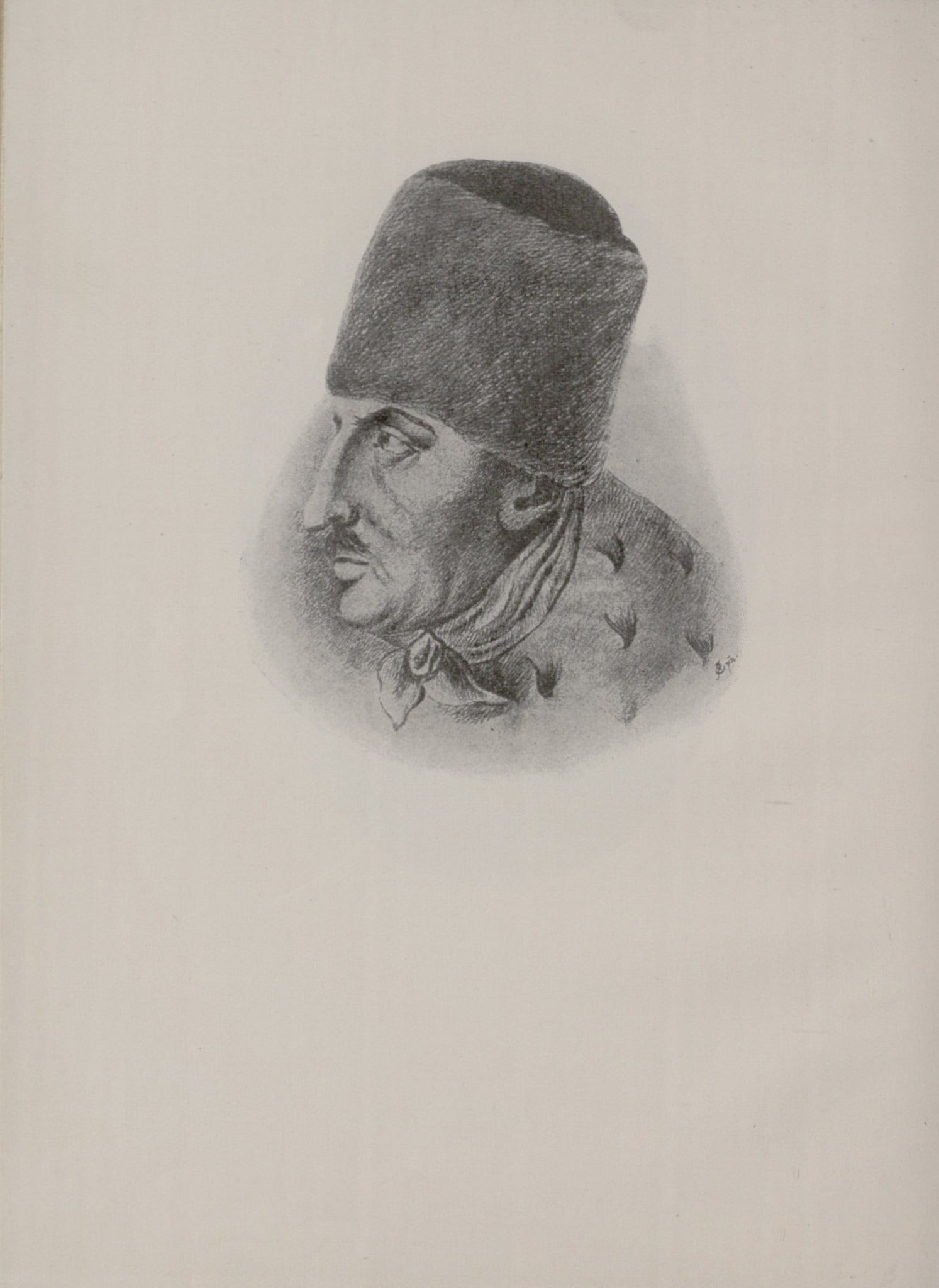
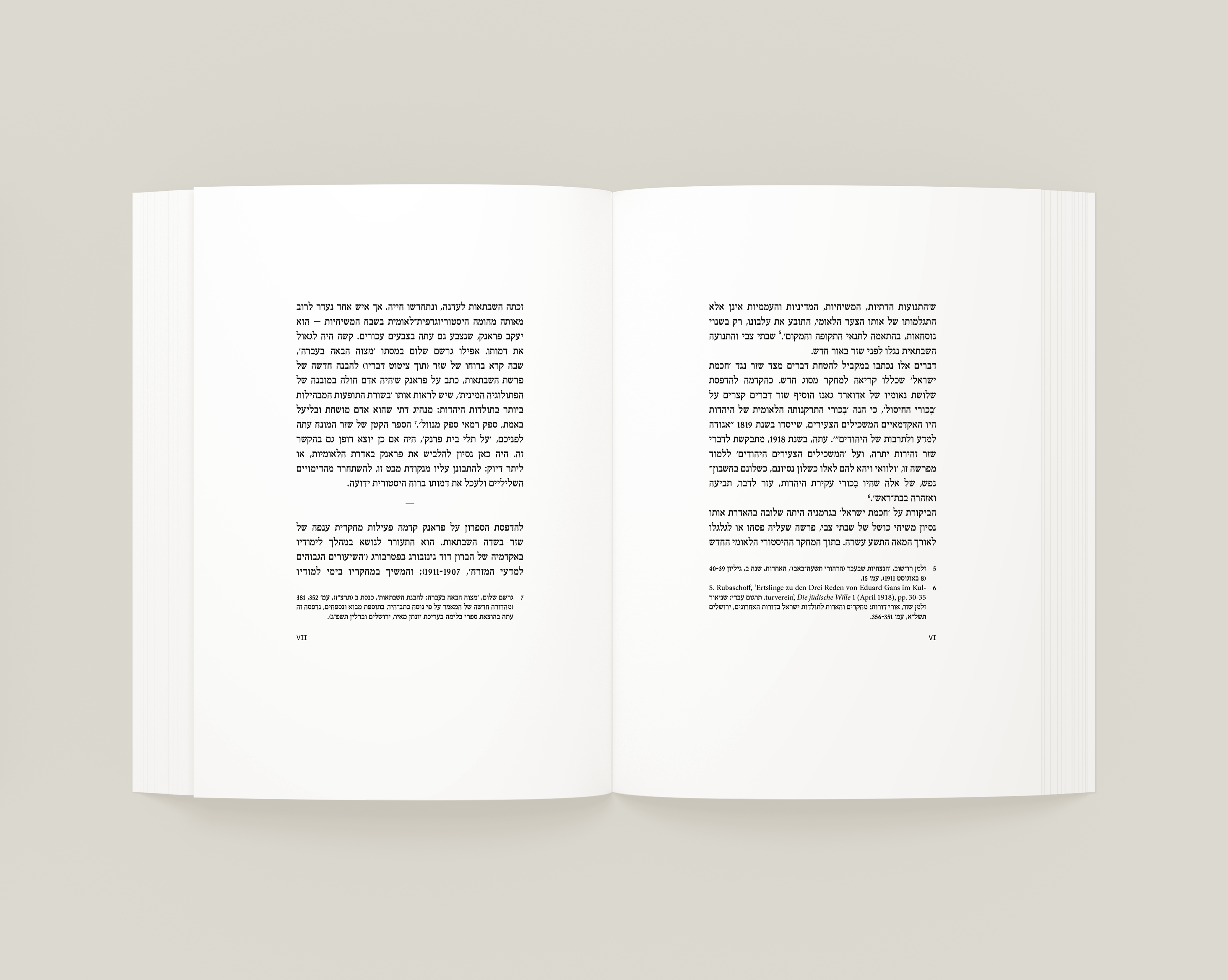
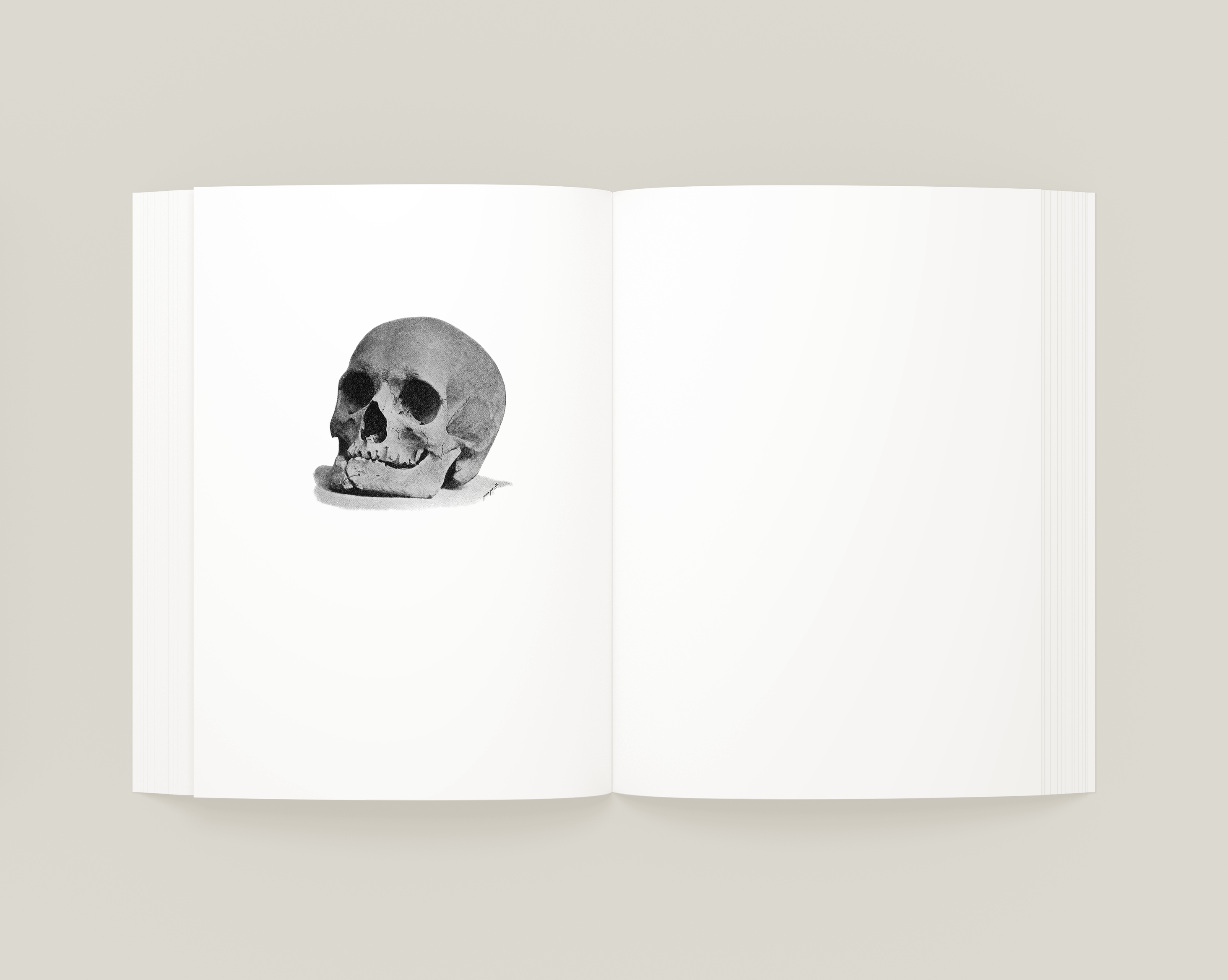
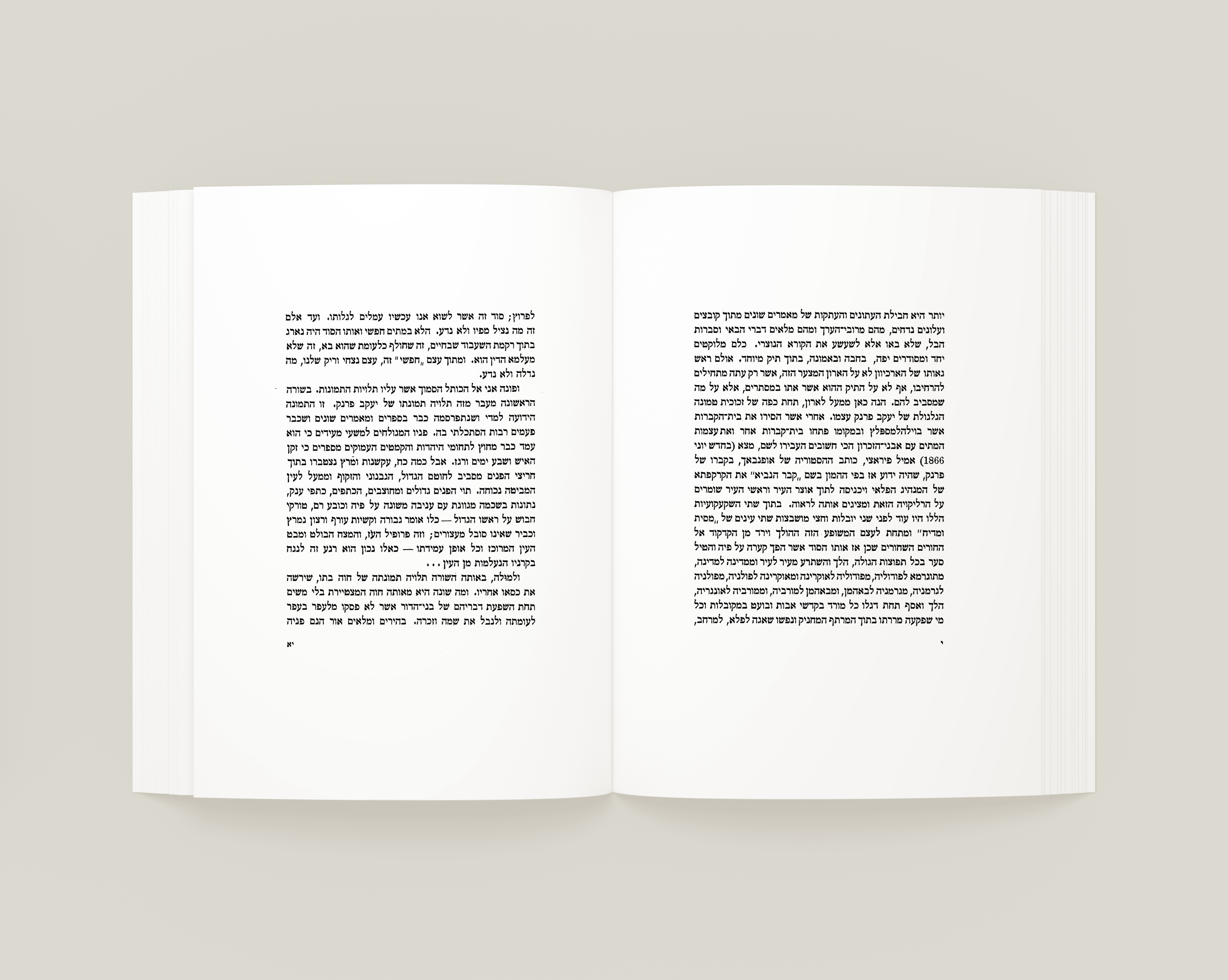
על תלי בית פרנק
'על תלי בית פרנק' (1923) היא אחת המסות הרדיקליות של זלמן שזר (1974-1889) שנדפסה לראשונה במהדורה ביבליופילית בליפסיה 1923. נוסח ראשון הופיע עוד בשנת 1920, בשם 'עקבות אחים אובדים', אך כאן הורחבו הדברים וקיבלו חן רב. הדברים הועלו על הכתב בעקבות ביקור של שזר באופנבך, מקום משובו האחרון של יעקב פראנק, והם נוסחו בלשון פיוטית-רומנטית. אין כאן רק רשמי ביקור באופנבך, אלא גם העלאת פרשת הפרנקיזם בצורה אסוציאטיבית לאור התבוננות בספרים, בתמונות ובתעודות של 'המאמינים' שנגנזו במוזיאון המקומי. התמונות המלבבות שצורפו לספר לא רק מותירות רושם רב, אלא שהמסה רוכבת עליהן ועצם הוספתן נתן עומק נוסף ומשמעות חדשה לטקסט. אין פלא שהרושם שהותירו הדברים היה רב, ואין פלא שגרשם שלום העלה את הדברים על נס במאמרו 'מצוה הבאה בעברה' (1936) וראה בספרון שלפנינו 'סימני הבנה אמתית לסבכי הנפש שבשבתאות' ופתח למחקר החדש על תנועה זו.
מודפסת כאן פקסימיליה של הדפוס הראשון בצרוף אחרית דבר מקיפה על דרכו של שזר בחקר השבתאות.
כריכה קשה, 78 עמ'
____________________
“Al Tilei Beit Frank” (Upon the Ruins of the House of Frank), among the more radical texts penned by Zalman Shazar (Rubaschow), was first printed in a limited bibliophile edition in Leipzig in 1923. While an earlier version had appeared in 1920 as “Ikvot Ahim Ovdim” (Footsteps of Lost Brothers), here the work was expanded and stylistically improved. The romantic text was inspired by a visit to Offenbach, the final residence of Jacob Frank. Yet this was no mere travel account, but an associative appraisal of Frankism as a whole in light of the books, images, and documents from Frank’s followers preserved in the local museum. The accompanying images are not only striking but serve as a springboard for the essay itself; their very presence contributes depth and significance to the text as a whole. It is no surprise, then, that the work made a strong impression. Gershom Scholem praised “Al Tilei Beit Frank” in his groundbreaking essay “Mitsvah ha-Ba’ah ba-Averah” (1936), going so far as to pronounce that the essay demonstrated “indications of a true appreciation of complexities of Sabbatianian psychology” and served as an opening to further research into the movement. A facsimile edition of the first edition is printed here alongside a comprehensive afterward touching on Shazar’s approach to the study of Sabbatianism.
מודפסת כאן פקסימיליה של הדפוס הראשון בצרוף אחרית דבר מקיפה על דרכו של שזר בחקר השבתאות.
כריכה קשה, 78 עמ'
____________________
“Al Tilei Beit Frank” (Upon the Ruins of the House of Frank), among the more radical texts penned by Zalman Shazar (Rubaschow), was first printed in a limited bibliophile edition in Leipzig in 1923. While an earlier version had appeared in 1920 as “Ikvot Ahim Ovdim” (Footsteps of Lost Brothers), here the work was expanded and stylistically improved. The romantic text was inspired by a visit to Offenbach, the final residence of Jacob Frank. Yet this was no mere travel account, but an associative appraisal of Frankism as a whole in light of the books, images, and documents from Frank’s followers preserved in the local museum. The accompanying images are not only striking but serve as a springboard for the essay itself; their very presence contributes depth and significance to the text as a whole. It is no surprise, then, that the work made a strong impression. Gershom Scholem praised “Al Tilei Beit Frank” in his groundbreaking essay “Mitsvah ha-Ba’ah ba-Averah” (1936), going so far as to pronounce that the essay demonstrated “indications of a true appreciation of complexities of Sabbatianian psychology” and served as an opening to further research into the movement. A facsimile edition of the first edition is printed here alongside a comprehensive afterward touching on Shazar’s approach to the study of Sabbatianism.
בחר אפשרויות







על תלי בית פרנק
מחיר מבצע82 ₪
מחיר רגיל

